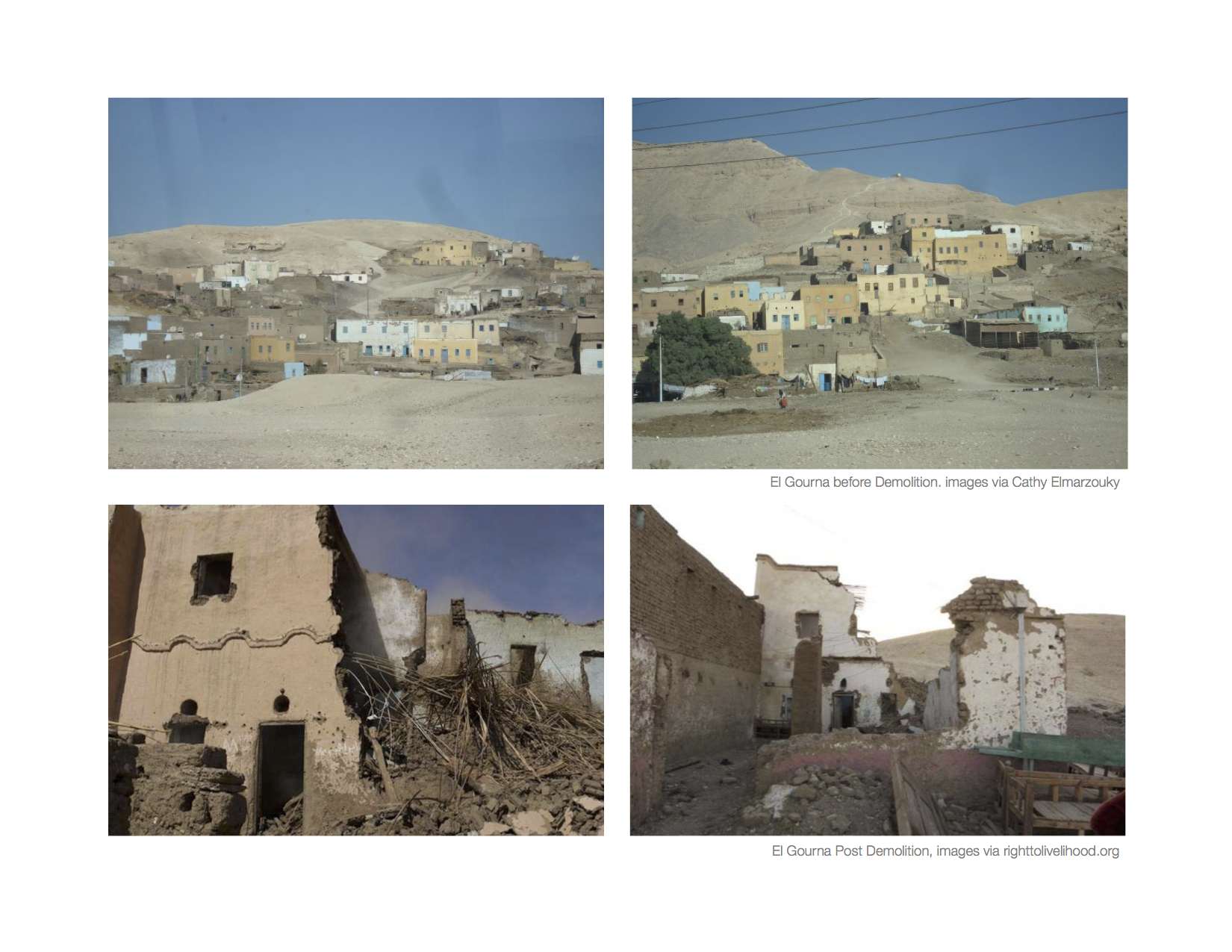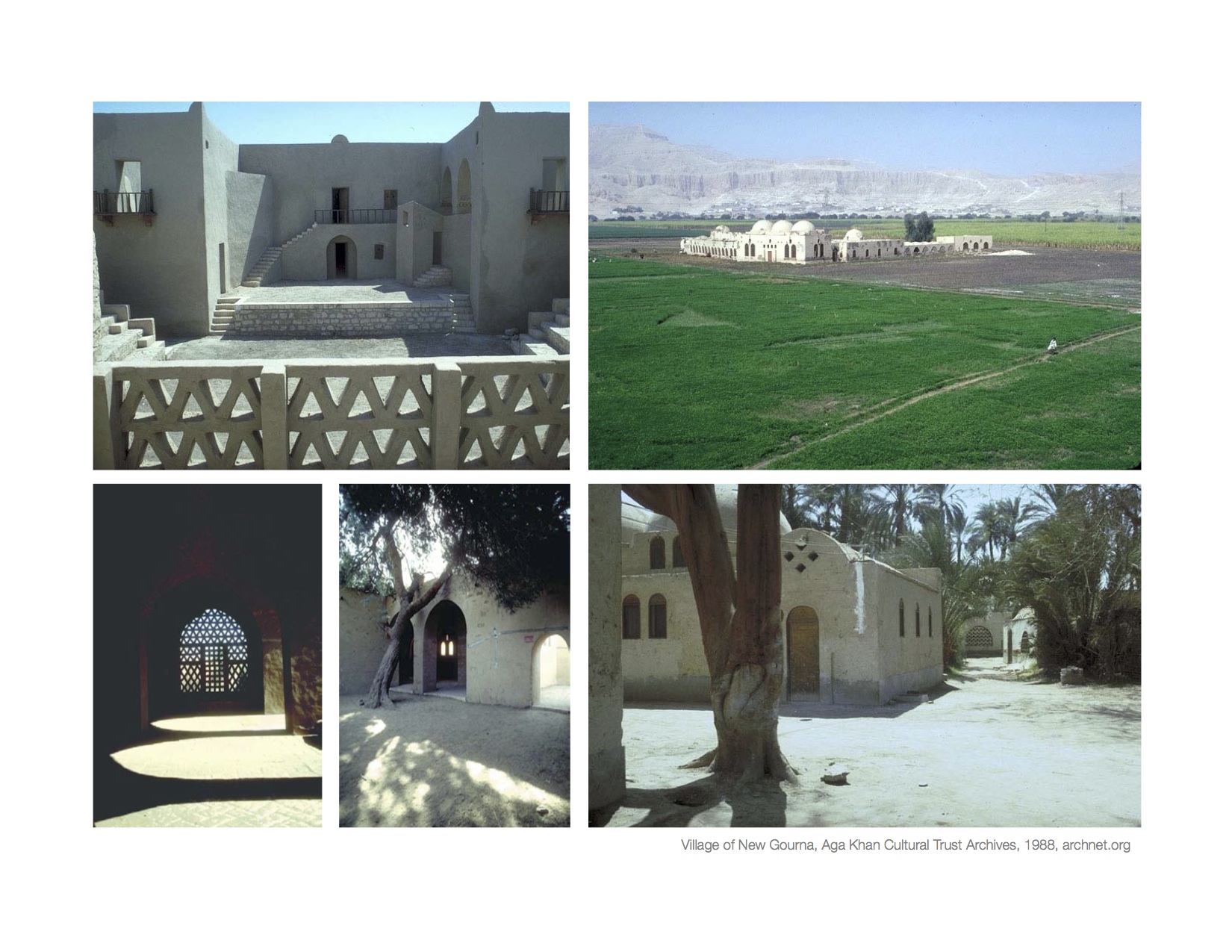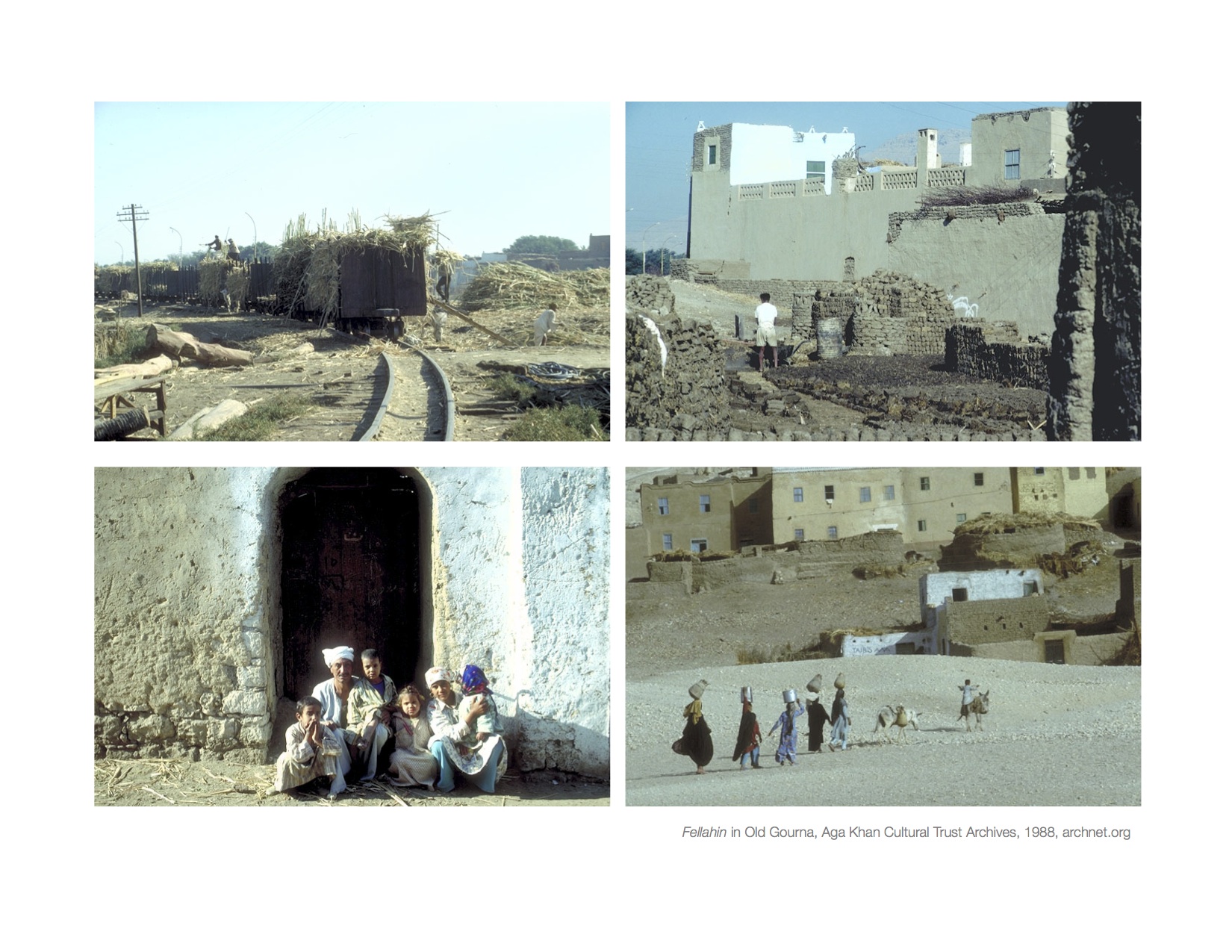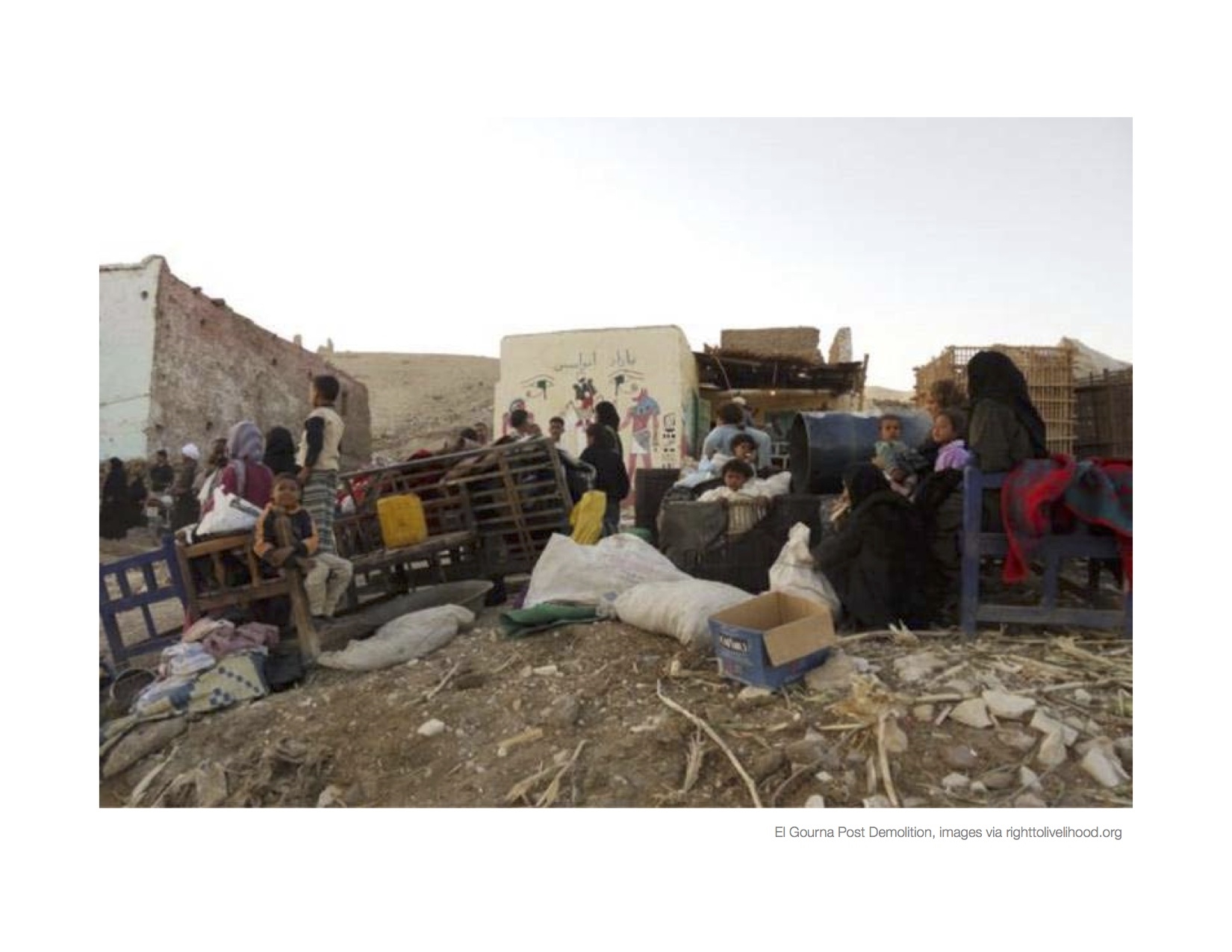Reconstruction of Histories: A Case Study of El Gourna
Location:
New York City
Egypt
Project Leads:
Nadia Elokdah, Nora Elmarzouky
and Kat Horstmann
Themes:
history
alternative narrative
spatial design
post-colonialism
architecture
“...the reconstruction of local history as analogous with the struggle to represent a complex national identity...”





New Gourna, Egypt is an internationally celebrated and recognized village for Hassan Fathy’s attempts at inclusive participatory planning. This exploration began with wanting to understand why this new village, with all its glory, failed, recognizing the breadth of research. In the creation of New Gourna we can see the reconstruction of local history as analogous with the struggle to represent a complex national identity, which led to questioning not the failure, but rather the rejection by the community of New Gourna. This led to exploring issues of westernization, national identity, and the historically marginalization people.
Concluding from this, the case of El Gourna was rather the greater failure of ‘designing for the poor’ instead of designing for the historically marginalized and under valued. Current campaigns are advocating the conservation and protection of New Gourna, however hesitancy toward celebrating this cultural and historical reconstruction comes from the discrepancies in recognizing a legitimate culture and history of the Gournis themselves. In this reconstruction, priority was given to the protection of the ancient heritage over the reality of the contemporary culture and needs. While recent attempts have been made internationally to be more conscientious towards current use and socio-cultural significance of a site in conserving an ancient history, their effectiveness has yet to be truly evaluated in changing the practice within the global culture of historical reconstruction. So, how can these seemingly disparate cultures, ancient history and the present generation, become equalized in their relevance to preserve and plan for today and tomorrow?
Researchers: Nora Elmarzouky, Nadia Elokdah, Kat Horstmann
